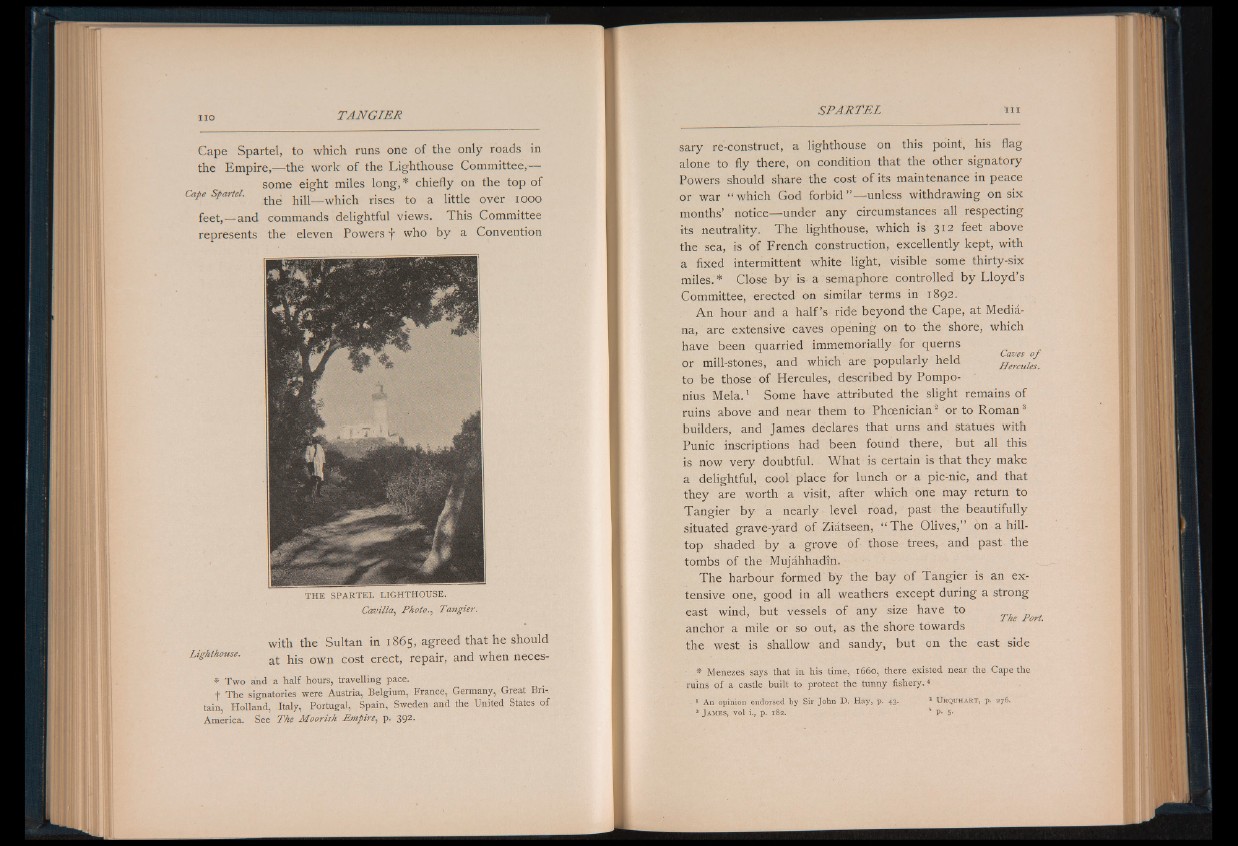
Cape Spartel, to which runs one of the only roads in
the Empire,T+-the work of the Lighthouse Committee,—
some eight miles long, * chiefly on the top of
Cape spartel. the rises to a little over iooo
feet,— and commands delightful views. This Committee
represents the eleven Powers f who by a Convention
TH E SP A R T E L LIGHTHOUSE.
Cavilla, Photo., Tangier.
with the Sultan in 1865, agreed that he should
Lighthouse. a t h is ow n c o s t e re c t) repair, and when neces-
* Two and a half hours, travelling pace.
f The signatories were Austria, Belgium, France, Germany, Great Britain,
Holland, Italy, Portugal, Spain, Sweden and the United States of
America. See The Moorish Empire, p. 392,
sary re-construct, a lighthouse on this point, his flag
alone to fly there, on condition that the other signatory
Powers should share the cost of its maintenance in peace
or war “ which God forbid”— unless withdrawing on six
months’ notice— under any circumstances all respecting
its neutrality. The lighthouse, which is 312 feet above
the sea, is of French construction, excellently kept, with
a fixed intermittent white light, visible some thirty-six
miles.* Close by is a semaphore controlled by Lloyd’s
Committee, erected on similar terms in 1892.
An hour and a half’s ride beyond the Cape, at Mediana,
are extensive caves opening on to the shore, which
have been quarried immemorially for querns
i • 1 ' 1 1 1 1 j Caves o f
or mill-stones, and which are popularly held Hercules.
to be those of Hercules, described b y Pompo-
nius Mela.1 Some have attributed the slight remains of
ruins above and near them to Phoenician3 or to Roman3
builders, and James declares that urns and statues with
Punic inscriptions had been found there, but all this
is now very doubtful. What is certain is that they make
a delightful, cool place for lunch or a pic-nic, and that
they are worth a visit, after which one may return to
Tangier by a nearly level road, past the beautifully
situated grave-yard of Ziatseen, “ The Olives,” on a hilltop
shaded by a grove of those trees, and past the
tombs of the Mujahhadin.
The harbour formed by the bay of Tangier is an extensive
one, good in all weathers except during a strong
east wind, but vessels of any size have to _ The Port.
anchor a mile or so out, as the shore towards
the west- is shallow and sandy, but on the east side
* Menezes says that in his time, 1660, there existed near the Cape the
ruins of a castle built to protect the tunny fishery.4
1 An opinion endorsed by Sir John D. Hay, p. 43. 2 Urquhart, p. 276.
3 James, vol i., p. 182. * p* 5*